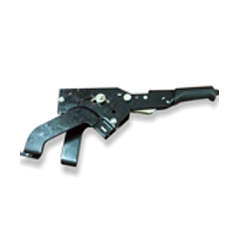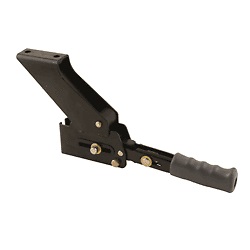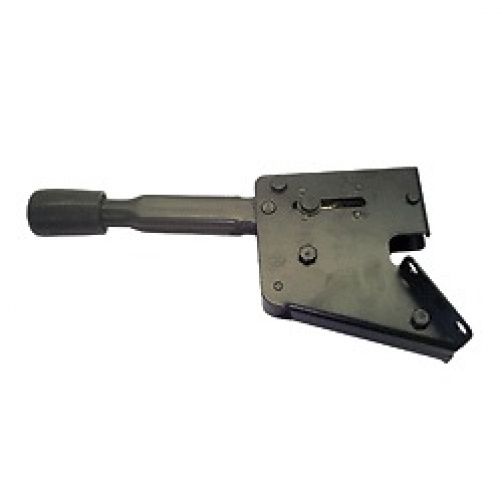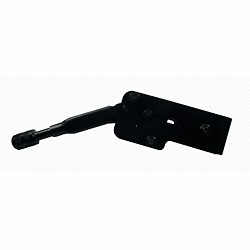
1-800-210-8170
MON-SAT 6AM-5PM PST,9AM-8PM EST24/7 ONLINE






We distribute an extensive selection of FORKLIFT HAND BRAKE parts for all makes and models. We ship directly from various warehouses located all over North America to provide the fastest shipping at the most affordable prices.
Forklift Handbrakes are secondary safety braking mechanism that bypasses the primary hydraulic braking system if it fails. They are also called e-brakes, emergency brakes and parking brakes and come in four types. Stick lever, found in old vintage forklift trucks under the instrument panel, center lever, found alongside the driving seat, pedal brake and the electric push button in the console. The mechanism is typically engaged by a mechanical lever, which is connected to the existing disc or drum brakes of the forklift, by passing the normal hydraulic braking system completely. Once the handbrakes are applied, the lever causes the corkscrew, which is attached to the caliper piston, to be engaged. When emergency brakes of forklift trucks are pulled, the brake cable, through an intermediate lever, increases the force of pull and passes through an equalizer. This U shaped equalizer splits the cable into two, thereby dividing the force equally across the two cables connecting with rear wheels. Rear wheels are mostly served with drum brakes. Hence, the cable bypassing the hydraulic system reach the brake shoes directly which are activated to enforce the braking system immediately.
When to Use the Handbrakes
As handbrakes are safety mechanisms, applying them regularly is a safe and best practice. Handbrakes should be engaged at the following scenarios:
When parking the forklift
During general operation of forklift
When operating up or down a hill/slope
Handbrake does not work properly
When the handbrake lever is pulled up, but the brakes feels loose and do not work properly. Then, the cable is likely needing some adjustments, as it may be stretched.
Using and operating the forklift can be tricky for the first-time operator. And even the most experienced operators will also face a number of problems when they are navigating the project sites and when transferring loads using forklifts. One problem lies in properly maneuvering the truck in industrial locations, turning the truck from left to right and avoiding other loads and workers in the process. This task is something that is often not mastered in project sites, and something that has caused accidents along the way. There are hundreds of accidents reported involving the failure to stop the forklift truck when required. For example, there’s a fatal accident reported in Hull, Yorkshire (UK) involving a forklift truck without a proper forklift hand brake. Reports suggest that the yard manager was run over by the truck with no brake, and this ended in court conviction. With these things in mind, it’s best to properly pay attention to the quality of the hand brake and its proper use.
Best Practice in Using the Forklift Hand Brakes
There are a few things to keep in mind when using the hand brake. First, there should be a realization that the hand brake is a safety feature that must be used at all times. There are appropriate moments that the hand brake should be used, and some protocols to keep in mind. For example if you are to use the hand brake, then it’s best to use this when the forklift has already been in place. The right way to use the brake is to wait for the truck to come to a complete stop before you can pull the brake handle. This is the requirement of the OSHA, and must-do in order to ensure the better parking braking performance of the forklift. The same is true with the hand brake for the forklift- you also need to make use of the forklift hand brake the right way to ensure that the safety of everyone at the workplace is ensured. It is best that that the hand brake should be reliable so that the operator can easily put the forklift on a complete stop when necessary. If there is a worker who is working on the production floor and the forklift is always running, then it will be easier for the operator to stop the forklift on its tracks and save lives.
The hand brake is one of the most critical parts and components of the forklift truck. If this is not property checked and maintained on a regular basis, then there’s a big chance that the safety of the workers will be put at risk. The accidents and common injuries in the workplace can be avoided and properly managed when operators are trained on how to use the forklift hand brake. If this safety component is properly selected, and the best practices are considered, then the safety of everyone in the workplace can be ensured.
Forklift Hand Brake Photos



*Manuals and parts books are not owned by Solid Lift Parts inc. and are presented for reference purpose only.